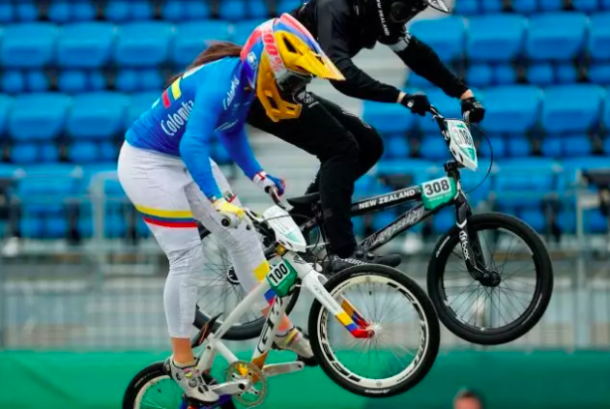Mariana Pajón is hoping to represent her fellow athletes…
The 32-year-old Colombian cyclist, a two-time Olympic gold medalist and BMX World Champion, is a candidate in elections at the 2024 Paris Games to represent their fellow athletes at the IOC. The International Olympic Committee announced the list of 32 candidates this week for elections to be held during the upcoming Olympic Games in Paris from July 26-August 11, when about 10,500 athletes are eligible to vote.
The International Olympic Committee announced the list of 32 candidates this week for elections to be held during the upcoming Olympic Games in Paris from July 26-August 11, when about 10,500 athletes are eligible to vote.
After being the flag-bearer for Colombia during the Opening Ceremony of the 2012 London Games, Pajón’s first participation in the BMX event resulted in the first gold medal for Colombia during the 2012 games and the second overall in Colombia’s participation in the Olympics.
In the 2016 Rio Games Pajón defended her title and won her second Olympic gold medal and fifth overall for Colombia. With this victory, Pajón became the first Colombian athlete to win two gold medals.
In the 2020 Tokyo Games, Pajón won silver.
But Pajon isn’t the only Latinx athlete in the running…
Kahena Kunze, a 32-year-old Brazilian Olympic sailor, is also a candidate. Together with Martine Grael she won the 49er FX class at the 2014 ISAF Sailing World Championships and a gold medal in the inaugural 49er FX race, during the 2016 Rio Games, a feat both repeated at 2020 Tokyo Games.
Other Latinx candidates include Salvadoran sailor Enrique Arathoon, who competed at the 2016 Rio Games and 2020 Tokyo Games; Mexican pentathlon athlete Emiliano Hernandez Uscanga; Puerto Rican judoka Melissa Mojica Rosario, who competed at the 2012 London Games, 2016 Rio Games and 2020 Tokyo Games; and Argentine judoka Paula Belén Pareto, who won a gold medal at the 2016 Rio Games.
Four positions are up for election.






